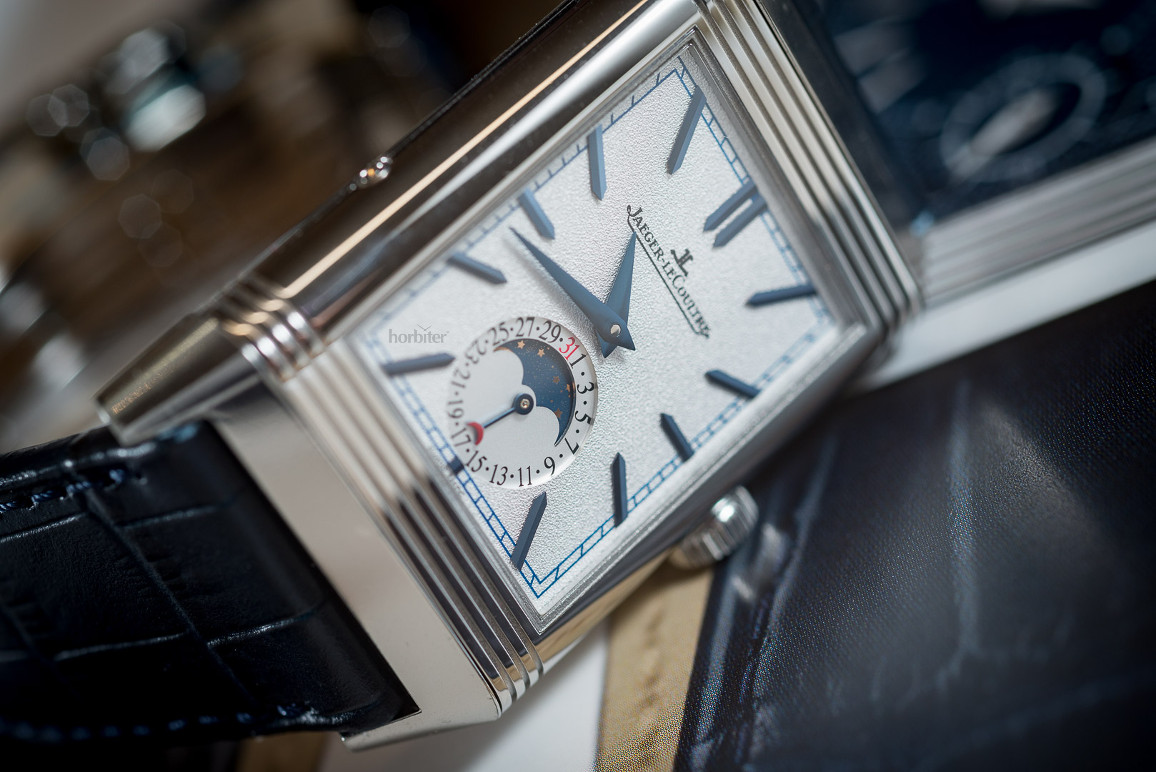When I think about Jaeger-LeCoultre , my thought goes straight to the Reverso ; a historic and inseparable association. This model follows a “ bold ” request from a British officer based in India that he made in the 20s, the man broke the glass of his watch replica during a polo match so he asked César de Trey (a salesman of dentures but also an avid and passionate collector of timepieces) whether he could suggest a sports watch replica that could both be worn during polo matches and that would also appear smart when wrapped around the wrist.
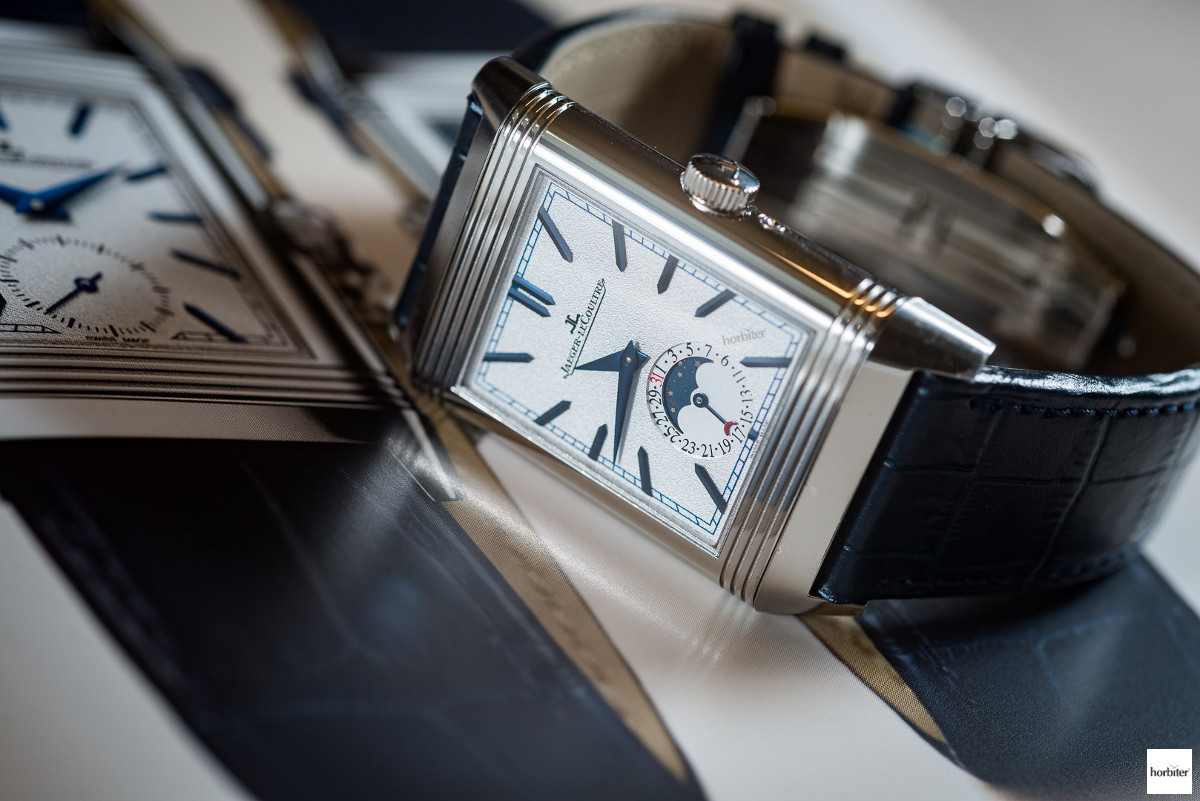 Once back to Switzerland , César de Trey got in touch with Jacques-David LeCoultre and asked him whether he could craft a timepiece with the characteristics described above. In close collaboration with his good friend Edmond Jaeger (a manufacturer of chronometers in Paris ) and the designer Renè-Alfred Chavout , he came up with the Reverso . This sober and elegant model, which is also practical and sporty at the same time, was created from a patent deposited on 4 th March 1931 by Renè–Alfred Chauvot , who, for this timepiece, was inspired by the perfect Art Decò style.
Once back to Switzerland , César de Trey got in touch with Jacques-David LeCoultre and asked him whether he could craft a timepiece with the characteristics described above. In close collaboration with his good friend Edmond Jaeger (a manufacturer of chronometers in Paris ) and the designer Renè-Alfred Chavout , he came up with the Reverso . This sober and elegant model, which is also practical and sporty at the same time, was created from a patent deposited on 4 th March 1931 by Renè–Alfred Chauvot , who, for this timepiece, was inspired by the perfect Art Decò style. 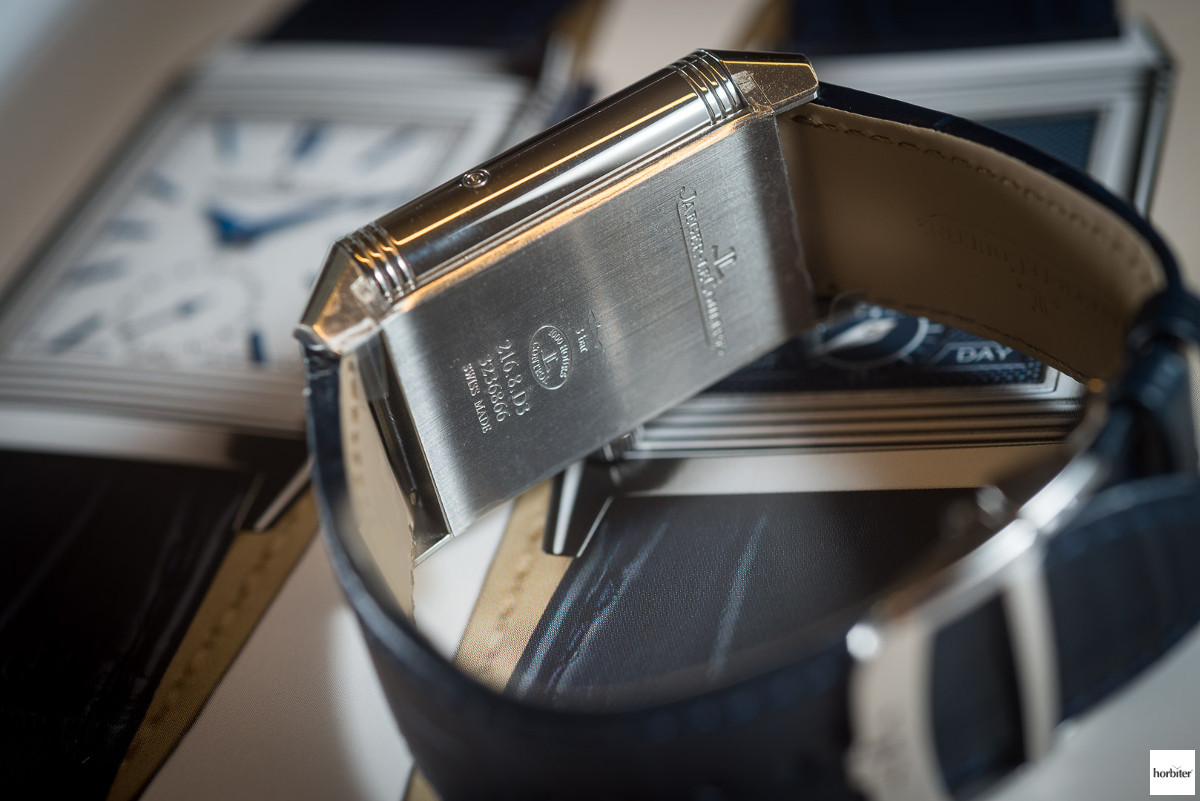 Watches from that time were too fragile to withstand the sports of the past (polo, skiing and car racing) but by mounting the watch replica ‘s case on a sturdy base that could rotate by 180 degrees, the glass and the dial could be protected against bumps. The case was made up of 30 elements refined one by one and was so well thought out that it required no further modifications for the next 50 years . Another advantage was that the side of the case-back could be customized with an emblem or other engravings. Probably, had it not been for the frailty of the glass from the past, this model wouldn’t have been so successful or, maybe, it wouldn’t have even been invented.
Watches from that time were too fragile to withstand the sports of the past (polo, skiing and car racing) but by mounting the watch replica ‘s case on a sturdy base that could rotate by 180 degrees, the glass and the dial could be protected against bumps. The case was made up of 30 elements refined one by one and was so well thought out that it required no further modifications for the next 50 years . Another advantage was that the side of the case-back could be customized with an emblem or other engravings. Probably, had it not been for the frailty of the glass from the past, this model wouldn’t have been so successful or, maybe, it wouldn’t have even been invented.
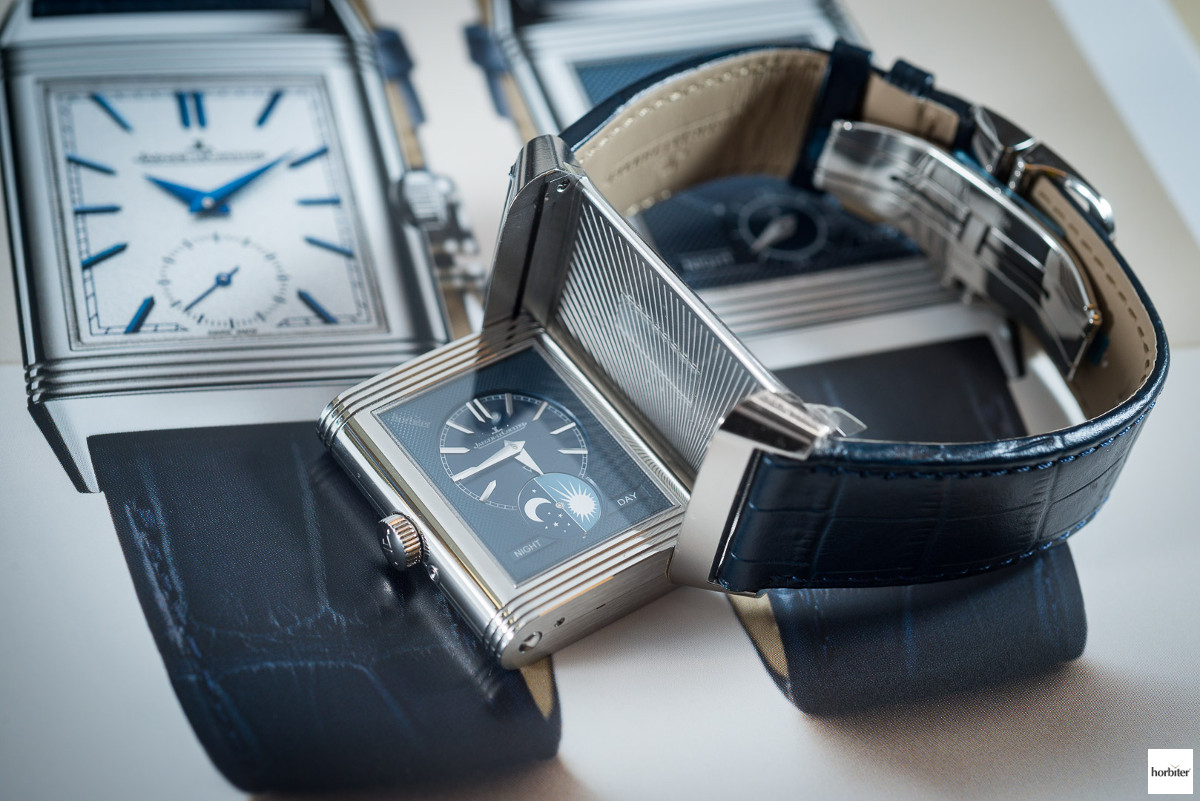 The arrival of the second world war moved the design towards round timepieces, while the arrival of quartz in the 70s marked the “ end ” of mechanic timepieces and Art Decò shaped and styled. In 1972 , Giorgio Corvo (an important Italian retailer of timepieces) came across 200 unused Reverso cases in the manufacturing plant, he purchased the whole lot and assembled them with mechanic movements to then sell them in Italy . He was so successful that Jaeger-LeCoultre relaunched the new Reverso line in 1982 . In 1985 , the case was improved even further, it was made waterproof and the parts moved from the original 30 parts to a more complex amount of 50 parts that make the case one of the more complicated cases ever built in the world of watch replica -making. This year also, the manufacturer is paying a tribute to this model by launching the stainless-steel made Jaeger-LeCoultre Reverso Tribute Moon . On a simple but elegant silver-coloured dial with a fine grained decoration and hand-applied blue indices, there is a splendid moon with craters and a starred sky located at 6 o’clock; the moon is gold in colour and it comes with a pointer-date and a hand whose tip is in the shape of a crescent moon.
The arrival of the second world war moved the design towards round timepieces, while the arrival of quartz in the 70s marked the “ end ” of mechanic timepieces and Art Decò shaped and styled. In 1972 , Giorgio Corvo (an important Italian retailer of timepieces) came across 200 unused Reverso cases in the manufacturing plant, he purchased the whole lot and assembled them with mechanic movements to then sell them in Italy . He was so successful that Jaeger-LeCoultre relaunched the new Reverso line in 1982 . In 1985 , the case was improved even further, it was made waterproof and the parts moved from the original 30 parts to a more complex amount of 50 parts that make the case one of the more complicated cases ever built in the world of watch replica -making. This year also, the manufacturer is paying a tribute to this model by launching the stainless-steel made Jaeger-LeCoultre Reverso Tribute Moon . On a simple but elegant silver-coloured dial with a fine grained decoration and hand-applied blue indices, there is a splendid moon with craters and a starred sky located at 6 o’clock; the moon is gold in colour and it comes with a pointer-date and a hand whose tip is in the shape of a crescent moon.
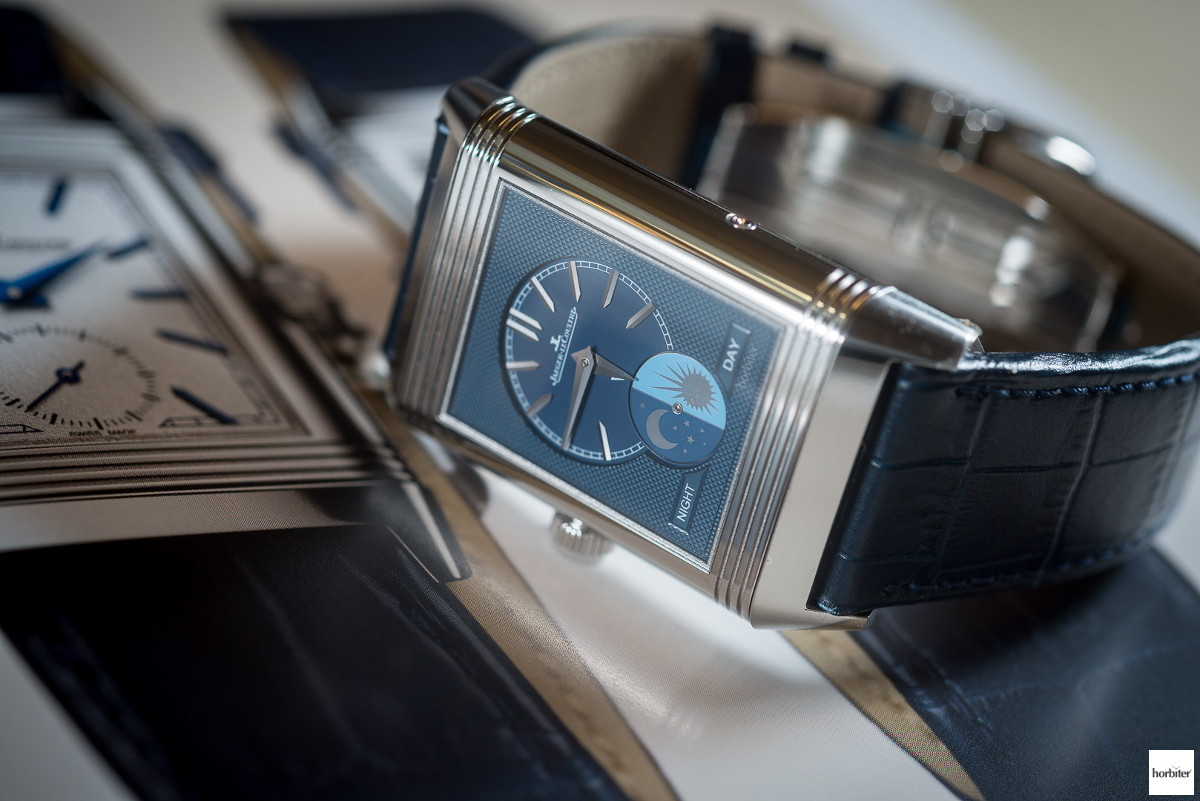 The concept of the original protection has disappeared on this model for technical/aesthetic reasons and to leave room to the second time zone on the case-back or, more correctly said, to the second dial. For many years it had focused more on aesthetic variations than technical ones. This complication was born in 1994 and it uses a single movement to set the hands of the second time zone into motion in the right direction, on two opposing dials, by using a transmission system with gears going through the centre of the movement and by setting into motion the hands of the second time zone and making them turn in the opposite direction than the case’s support. Once turned towards the top, the moving direction turns into the correct direction and everything is decorated with oblique lines in an Art Decò style.
The concept of the original protection has disappeared on this model for technical/aesthetic reasons and to leave room to the second time zone on the case-back or, more correctly said, to the second dial. For many years it had focused more on aesthetic variations than technical ones. This complication was born in 1994 and it uses a single movement to set the hands of the second time zone into motion in the right direction, on two opposing dials, by using a transmission system with gears going through the centre of the movement and by setting into motion the hands of the second time zone and making them turn in the opposite direction than the case’s support. Once turned towards the top, the moving direction turns into the correct direction and everything is decorated with oblique lines in an Art Decò style.
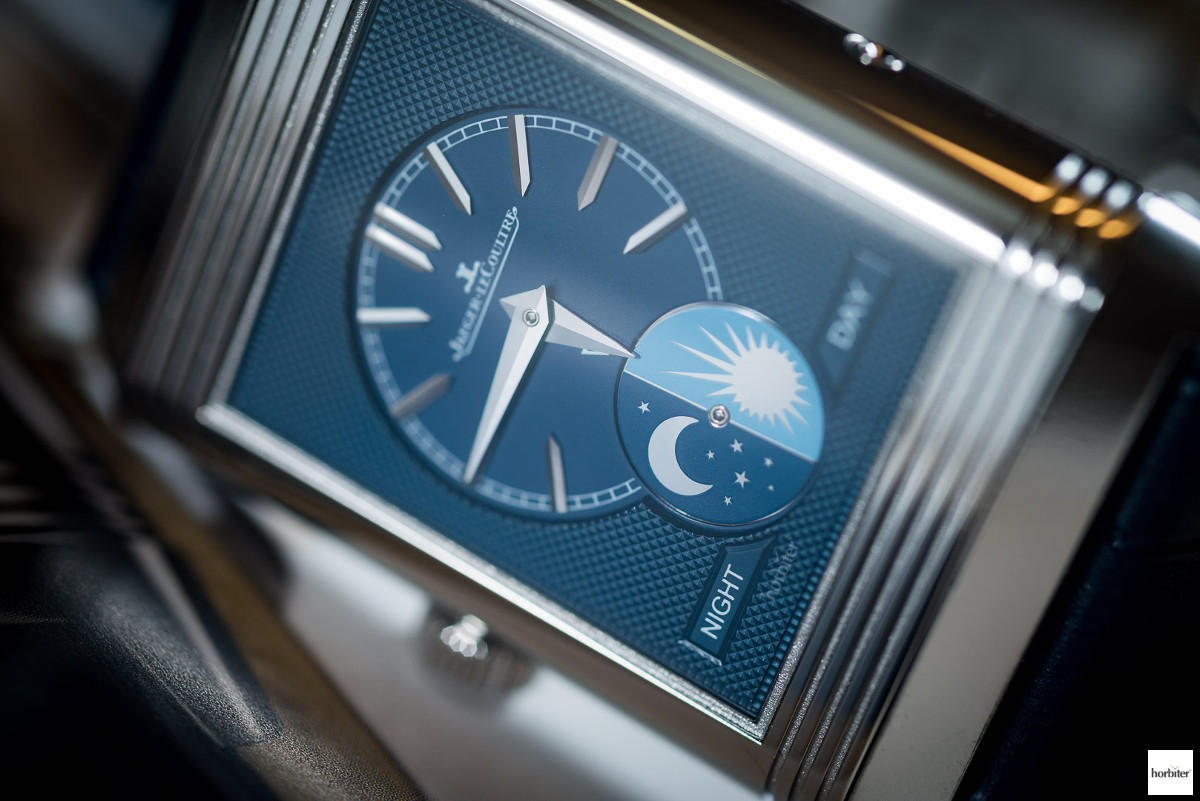 The time-adjusting is simplified by a cursor present on the back-case (or the lever) that moves forward by 1 hour the second time zone and the day/night disc on this version. The dial clearly clashes with the main one due to the deep blue colour on a “ Clous de Paris ” decoration on the rims with silver-coloured indices, in the centre are a smooth opaline finishing and a sun/moon disc with “ Night & Day ” writings on the sides. This refined calibre is named 853A and is manual , it features 19 rubies and a single barrel . The calibre runs at a frequency of 21,600 oscillations and it lies within a generous-sized case with not too excessive dimensions ( 49,4mm by 29,9mm and 10,9mm thick), it comes with a blue leather strap. Alternatively, you can opt for a strap with red stitching called “ Trieste ” and a classic strap made of black crocodile skin. Jaeger-LeCoultre ‘s ability to renew and complicate this model while keeping it its same self seems endless. In my opinion, they could leave on the Jaeger-LeCoultre Reverso Tribute Moon the writing “ Reverso ” only (like they did on the Grande Reverso Tribute to 1931 Ultra-Thin and on the Duoface from some years ago) but I don’t dislike this version either. I find the retail price ( 13,500 euro ) matching the value and the crafting difficulty.
The time-adjusting is simplified by a cursor present on the back-case (or the lever) that moves forward by 1 hour the second time zone and the day/night disc on this version. The dial clearly clashes with the main one due to the deep blue colour on a “ Clous de Paris ” decoration on the rims with silver-coloured indices, in the centre are a smooth opaline finishing and a sun/moon disc with “ Night & Day ” writings on the sides. This refined calibre is named 853A and is manual , it features 19 rubies and a single barrel . The calibre runs at a frequency of 21,600 oscillations and it lies within a generous-sized case with not too excessive dimensions ( 49,4mm by 29,9mm and 10,9mm thick), it comes with a blue leather strap. Alternatively, you can opt for a strap with red stitching called “ Trieste ” and a classic strap made of black crocodile skin. Jaeger-LeCoultre ‘s ability to renew and complicate this model while keeping it its same self seems endless. In my opinion, they could leave on the Jaeger-LeCoultre Reverso Tribute Moon the writing “ Reverso ” only (like they did on the Grande Reverso Tribute to 1931 Ultra-Thin and on the Duoface from some years ago) but I don’t dislike this version either. I find the retail price ( 13,500 euro ) matching the value and the crafting difficulty.
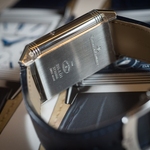
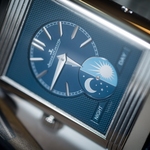
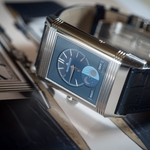
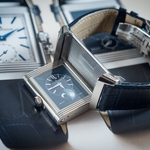
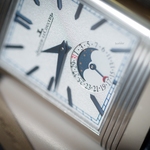
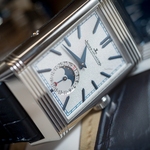
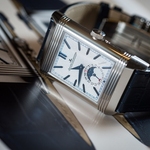
Denis Fabbro @Horbiter
